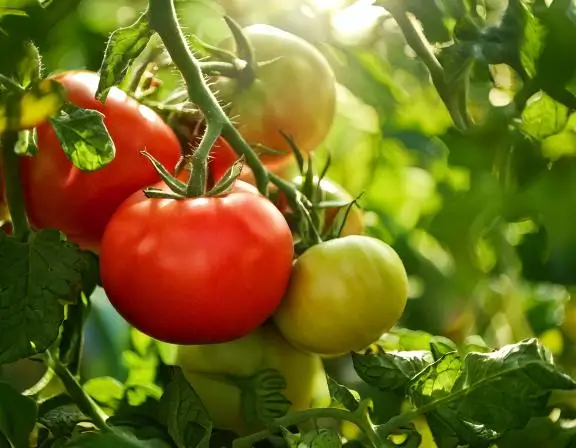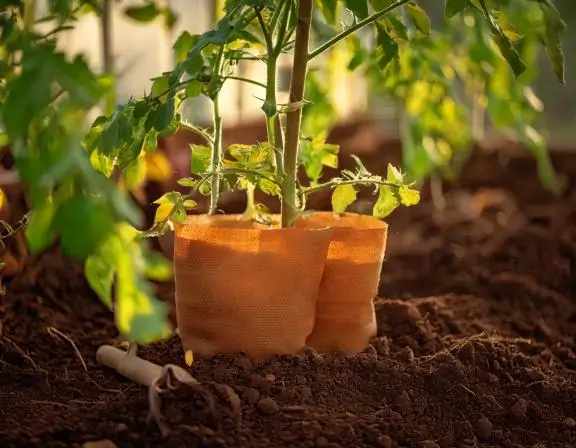
To grow tomatoes, you’ll find them one of the most satisfying crops to cultivate at home. Growing tomatoes can be fun and rewarding whether you have a small garden or just a few pots. They taste better than store-bought varieties and are packed with flavor and nutrients. To ensure you grow the juiciest, most flavorful tomatoes, follow these seven expert tips that will help you maximize the potential of your tomato plants.
Table of Contents
1. Select the Right Tomato Varieties
Choosing the right variety is the first step toward growing great tomatoes. There are various types, each suited for different purposes:
Cherry Tomatoes: These small, sweet tomatoes are perfect for salads and snacking. They grow well in containers and require less space.
Beefsteak Tomatoes: Known for their large size and meaty texture, these are great for slicing and adding to sandwiches.
Roma Tomatoes: These firm, oblong tomatoes are best for making sauces because of their low water content.
Pick a variety that matches your growing conditions. If you live in a cooler area, opt for early-maturing types. Warmer climates can support a wider range of tomatoes, including heirloom varieties.
2. Plant in a Sunny Location
Tomatoes need plenty of sunlight to grow their best. Ideally, they should get at least 6 to 8 hours of direct sunlight daily. The more sun they get, the better their growth and the more flavorful the fruit will be. Choose a sunny location in your garden, or place your containers in the brightest spot on your patio or balcony.
If your growing space is partially shaded, you can still grow tomatoes, but the yield may be smaller, and the ripening process may take longer.
3. Prepare Well-Draining, Nutrient-Rich Soil
Tomatoes flourish in soil that drains well and is enriched with organic matter. Before planting, enhance the soil by incorporating compost or aged manure. This will provide essential nutrients that promote strong root development and healthy plants. Tomatoes prefer slightly acidic soil with a pH of around 6.0 to 6.8.
Choose a loose, high-quality potting mix that drains well for those growing in containers. Make sure the containers have good drainage holes to prevent waterlogging, which can lead to root rot.
4. Water Consistently
Consistent watering is crucial for growing healthy tomatoes. Tomatoes like even moisture but do not tolerate waterlogged soil. Water your plants deeply, ensure the water reaches the roots, and avoid splashing water on the leaves. Wet leaves can encourage the growth of fungal diseases.
A helpful tip is to water your tomatoes early in the morning. This gives the soil time to absorb moisture and reduces evaporation during the hotter parts of the day. You can also mulch around your tomato plants to help retain moisture and reduce the need for frequent watering.
5. Support Your Tomato Plants
As your tomato plants grow and bear fruit, they need support to prevent the stems from bending or breaking. There are various methods to support your tomato plants:
Tomato Cages: These are popular because they are easy to install and keep the plant upright.
Stakes: Tall stakes next to the main stem can provide support as the plant grows. Tie the plant to the stake loosely with soft ties to avoid damaging the stem.
Trellises: If you’re growing indeterminate varieties (which grow continuously throughout the season), trellises provide vertical support and maximize space.
Supporting your plants also improves airflow, which helps prevent diseases and allows for better light penetration.

6. Fertilize Regularly
Tomatoes are heavy feeders and require a steady supply of nutrients throughout the growing season. After planting, apply a balanced fertilizer that contains nitrogen, phosphorus, and potassium. These nutrients promote green growth, strong roots, and healthy fruit development.
As the plants start to flower and set fruit, switch to a fertilizer higher in phosphorus and potassium, encouraging fruiting. Organic options like compost tea or seaweed extract are great natural fertilizers that can help boost your tomato harvest.
7. Monitor for Pests and Diseases
Tomato plants are prone to various pests and diseases, so it’s important to watch them and take action early if you spot any issues. Common pests include aphids, whiteflies, and tomato hornworms. Diseases like blight and powdery mildew can also affect your plants.
Here are a few natural ways to manage pests and diseases:
Neem oil: A natural insecticide that works well against aphids and whiteflies.
Companion planting: Planting marigolds or basil near your tomatoes can help deter harmful insects.
Hand-picking pests: You can remove larger pests like caterpillars or hornworms by hand.
Pruning away diseased leaves can prevent the spread of fungal infections. Good airflow and proper watering techniques can also help reduce disease risk.
Conclusion
Growing juicy, flavorful tomatoes doesn’t have to be difficult. Following these seven expert tips ensures that your tomato plants get the best care possible. From choosing the right varieties to providing consistent watering and support, each step contributes to a successful tomato harvest. With a little attention and care, you’ll enjoy delicious, homegrown tomatoes in no time!

